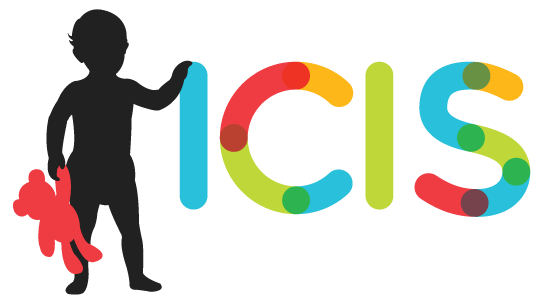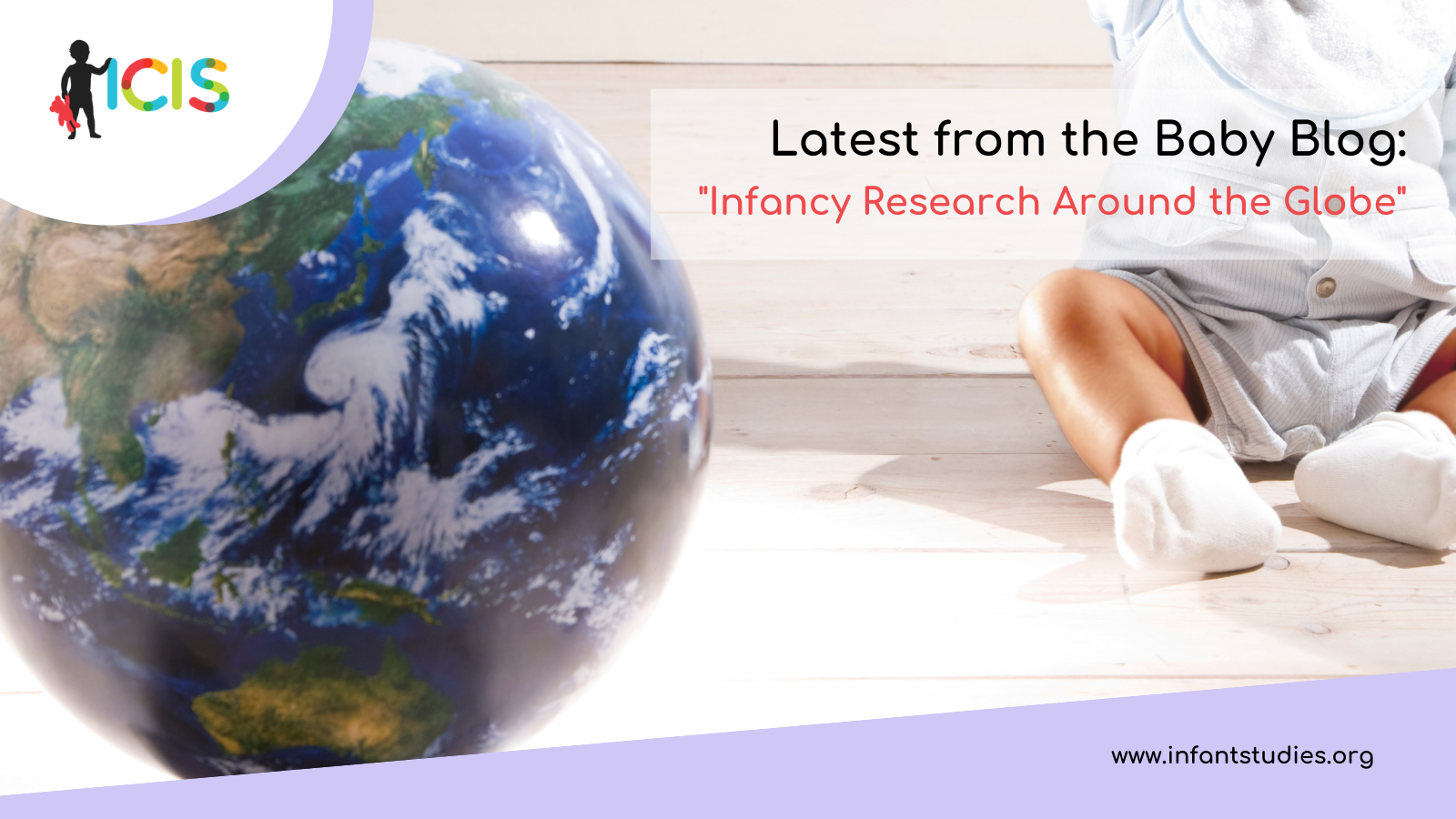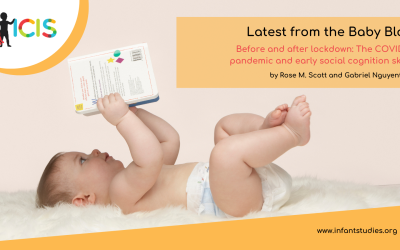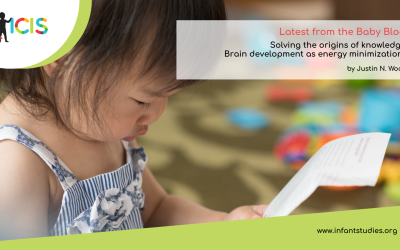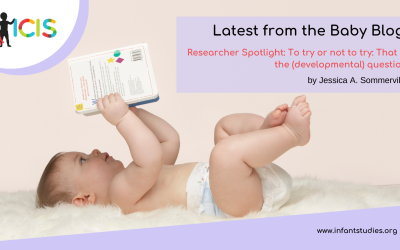by Mireille Babineau, Katherine Jung, Myah Meleca, Shelby Suhan, Anicole Tan and Yi Lin (Elaine) Wang
Although a large body of literature extensively studies language acquisition and factors that contribute to language development from infancy and beyond, the universality of such findings remains unclear. For instance, previous research emphasizes the importance of infant- and child-directed speech in fostering language development ; highlighting that more child-directed speech (quantity) and better child-directed speech (quality) each lead to improvements in language developmental outcomes (e.g., Hoff & Naigles, 2002; Golinkoff, Can, Soderstrom, & Hirsh-Pasek, 2015; Weisleder & Fernald, 2013). However, studies conducted in relatively small scale populations have led to observations that call our understanding of certain ‘universally accepted’ language acquisition processes into question.
To learn about the study of cross-cultural variation in children’s linguistic experiences, the Babineau Lab spoke to researchers Dr. Alejandrina (Alex) Cristia (CNRS researcher at the École Normale Supérieure in Paris), Dr. Camila Scaff (postdoctoral researcher at the University of Zurich) and Dr. Ruthe Foushee (postdoctoral researcher at the University of Chicago), whose respective field work has explored potential gaps in the classical literature of early language development. The findings from their research conducted in small-scale communities in the Bolivian Amazon, Mexico, and Papua New Guinea revealed the importance of exploring multiple definitions of both diversity (e.g. cultural and social) and context (e.g. linguistic and developmental) when investigating theories of language acquisition.
The three researchers graciously shared with us the origins of their interest in language acquisition research and subsequent challenges they faced in the field. They also highlighted key differences between these communities and their North American/Western European counterparts as well as how their findings have contributed to the field of language acquisition.
The beginning of a journey
Language has always been a subject of significance for these passionate researchers. Growing up in Chile as a Spanish-French bilingual created an interesting cultural and linguistic experience for Dr. Scaff, inspiring her to study how language acquisition varies across different types of environments. According to Dr. Foushee, the roots of her early passion for studying language lies in her childhood shed, which contains multiple notebooks with notes she made as a child about the prosody of different aged individuals in her neighborhood. As for Dr. Cristia, she initially did not think her passion for reading would be worth pursuing. It was only after she switched from studying engineering to literature and took a couple of linguistics classes that she realized how much she enjoyed reading and writing about language.
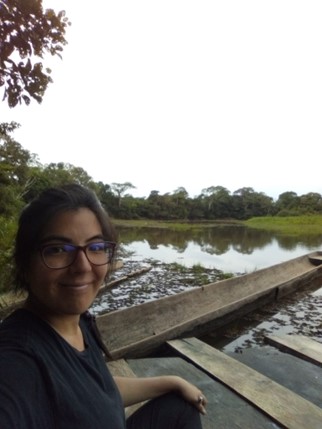
Dr. Camila Scaff in the Bolivian Amazon

Her living quarters during her stay (a simple tent)
All three scientists have been fascinated by the fact that across the world, individuals end up speaking or signing the language that they are exposed to in their environment. They were intrigued about how different linguistic and cultural experiences, such as the type and amount of language input children receive, might impact language acquisition. Based on a commonly held assumption in the field, infant- or child-directed speech is highly important for language acquisition. However, the prevalence of speech addressed to children varies greatly across cultures (e.g., Cristia, Dupoux, Gurven, & Stieglitz, 2019). In fact, Dr. Cristia was inspired to start conducting research in small-scale communities after learning that Tsimane’ adults almost never speak directly towards their infants; yet, infants still learn to speak the language. With the help of an experienced anthropologist (Dr. Jonathan Stieglitz), Dr. Cristia and Dr. Scaff embarked on an exciting new scientific journey in the Bolivian Amazon to explore the language children are exposed to, and the speech they produce. Dr. Foushee went on similar, equally exciting adventures. After exploring what American children can learn from different types of input (such as overheard speech: Foushee, Srinivasan, & Xu, 2021), she collaborated with a Mayan community in Mexico to examine the quantitative and qualitative properties of speech heard by young children there. By immersing themselves in new cultures and studying the social and linguistic interactions of infants and children growing up in these communities, these three researchers were able to begin obtaining answers to some of their questions.
What’s special about these communities?
Conducting research in these communities presents a variety of unique challenges, from recruitment to consenting to broader issues of who the research is for. Since participants cannot simply be contacted by phone or email, the recruitment experience is highly unique. For example, individual families from the Tseltal Maya community were reached by trekking into the community’s mountainous terrain and inquiring whether a family would be willing to participate. In contrast, the Tsimane’ community was first contacted via radio message with the assistance of a community representative, and subsequently called to meet with the researchers by the sound of a horn. Further, given the small size of many of these communities, researchers need to be patient and often make several trips to the same community in order to recruit enough participants to obtain a reasonable sample size per age group. As Dr. Cristia pointed out, findings are ultimately highly representative of a given population, since a large percentage of the community ends up participating.
Given past and present power dynamics between foreigners and community members, researchers must adopt a sensitive approach and respectfully adapt the consent process to the needs and desires of each community. As most participants have no schooling experience and have not been exposed to the research conventions of Western societies, something as simple as thoroughly explaining a task to participants can be challenging. Instead of providing a written consent form requiring reading long paragraphs of text, researchers obtain families’ verbal consent and convey important details orally or by showing pictures. To ensure the communication of key information, it is best that researchers have at least rudimentary knowledge of the language spoken by the community. During her trip to Papua New Guinea, Dr. Cristia was amazed by her colleague Dr. Marisa Casillas’s ability to notice when her bilingual research assistant, speaking the challenging language Yélî, forgot to mention some information during the consent process. Other features of these communities also change the consent process; for instance, the lack of sound-proofing in large households (sometimes even a lack of walls) in some communities requires an emphasis on wider participant consent and unique privacy considerations. Finally, researchers must also consider participants’ unique cultural beliefs and practices. For example, with Rossel Islanders, verbal or non-verbal direct consent from infant and children participants is also required: If a toddler runs away from you, you take this as a clear ‘no’ and move on to the next child.
Most importantly, researchers develop strong ties with the communities and are grateful for their support. Community members are proud to have their identity represented in research and are often involved in projects for the long term; as researchers have traveled far to study a foreign language and culture, many community members are eager to help as best as they can and have a stake in how the research turns out. For instance, Dr. Cristia found herself being approached by curious Rossel Islanders who wanted more information on previous studies conducted in their community. Researchers typically work closely with local bilingual research assistants to ensure studies are designed in community-appropriate ways and to ensure effective communication with participants; both participants and research assistants contribute valuable and much welcomed cultural and linguistic insights about stimuli and procedures. Indeed, in the Tseltal Maya and the Rossel Island communities there are now several generations of research assistants from the same family! These individuals not only help to ensure the research is conducted effectively, they also help foreign researchers understand if they are asking their questions in the right ways.
Expecting the unexpected!
Dr. Cristia, Dr. Scaff and Dr. Foushee encountered many expected and unexpected challenges while working in remote villages. As an ex-girl scout, Dr. Scaff was not afraid of leaving the comfort of her Parisian life, but acknowledged the unpredictable nature of field work was hard for her morale at times. “Even if you plan everything because you think everything will go as planned, it never goes as planned in the field,” said Dr. Scaff when talking about the time her truck broke down on the way to one of the villages. At this point, she had already made many trips to the Amazon rainforest, but still could not have predicted that she would have to carry all her equipment, food, and personal items to the research site on foot.
Technological challenges are common, as these isolated communities have no electricity, a far cry from the lab environments where typically-studied populations are tested. Dr. Scaff recalled bringing lots of different solar panels to generate her own power. Unexpectedly, the equipment could only be used in the morning and in the late afternoon due to the scorching heat of midday when it would “just burn and fry.” On the flip side, 2 days of non-stop rain meant 2 days without any sort of power at all and thus, 2 days without data collection. Dr. Foushee recalled preparing for months on end before even embarking on her journey. Traveling light, she had to ensure all her equipment was no bigger than the diagonal of a carry-on suitcase. She set up a makeshift camp in her apartment, testing her equipment under various conditions including variable lighting and a lack of continuous power. Despite her extensive preparation, there was one setback she could not predict: the screws holding her mount together were not sold in Mexico, forcing her to create a new mount in the field. Moreover, Dr. Foushee could not have imagined that infants would cry at the sight of her when wearing a white t-shirt. Similarly, Dr. Cristia encountered unexpected methodological problems with her set-up while attempting to conduct a looking-while-listening task. Her stimuli simply failed to catch children’s attention. Turns out screens are not universally attractive! As she told us, you quickly learn that “most of your intuitions are going to be wrong” and that working with these populations requires humility and a willingness to listen and learn from your mistakes.
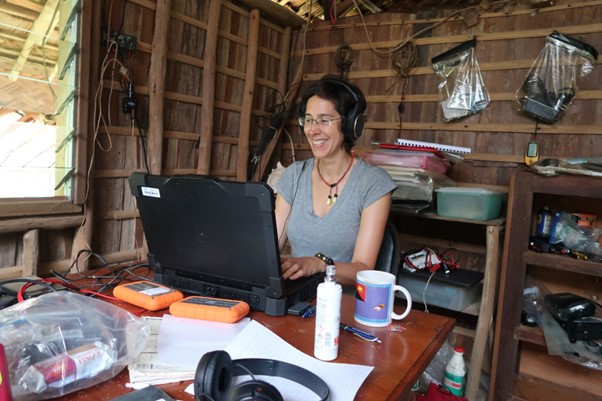
Dr. Alejandrina Cristia working in the field, courtesy of S. Levinson.
Contributions to the field and future directions
Despite the physical and mental challenges that researchers must endure while working in remote locations, work by Dr. Scaff, Dr. Foushee, Dr. Cristia and other researchers who strive to explore language acquisition in culturally unique communities reveal the invaluable role of social context and diverse sampling in developmental science research. Studies conducted in remote forager-farmer Bolivian villages reveal that, despite rare exposure to child-directed speech, the Tsimane’ children still achieve language proficiency—potentially through picking up on indirect sources of language (Cristia et al., 2019; Scaff et al., under review). Dr. Foushee’s recent work showcases children’s resilience and adaptability to their learning environment, as Tseltal Mayan infants have been shown to learn word meanings from overheard speech (Foushee & Srinivasan, in prep). Taken together, their work aims to test the universality of previous language acquisition theories, increase the generalizability of claims regarding language and child development, and open various lines of inquiry for future study to explore language learning processes.
References
Cristia, A., Dupoux, E., Gurven, M., & Stieglitz, J. (2019). Child-directed speech is infrequent in a forager-farmer population: A time allocation study. Child Development, 90 (3), 759-773, 10.1111/cdev.12974.
Foushee, R. & Srinivasan, M. (in prep). Evidence of early lexical knowledge in Tseltal Maya infants primarily exposed to overheard speech.
Foushee, R., Srinivasan, M., & Xu, F. (2021). Self-directed learning by preschoolers in a naturalistic overhearing context. Cognition, 206, 104415.
Golinkoff, R. M., Can, D. D., Soderstrom, M., & Hirsh-Pasek, K. (2015). (Baby) talk to me: the social context of infant-directed speech and its effects on early language acquisition. Current Directions in Psychological Science, 24(5), 339-344.
Hoff, E., & Naigles, L. (2002). How children use input to acquire a lexicon. Child Development, 73, 418– 433.
Scaff, C., Casillas, M., Stieglitz, J., & Cristia, A. (under review). Characterization of children’s verbal input in a forager-farmer population using long-form audio recordings and diverse input definitions.
Weisleder, A., & Fernald, A. (2013). Talking to children matters: Early language experience strengthens processing and builds vocabulary. Psychological Science, 24, 2143– 2152.
About the Authors

Mireille Babineau
University of Toronto
The Babineau Lab is by Dr. Mireille Babineau, an Assistant Professor of Psychology (teaching stream) at the University of Toronto (St. George campus). Its research focuses on language acquisition and the impact of bilingualism on young children’s language and social development. A total of five undergraduate students from the lab collectively wrote this blog post under Dr. Babineau’s guidance:
- Katherine Jung: 3rd year Psychology Specialist student, medical student at the University of Ottawa in the fall of 2022
- Myah Meleca: 3rd year Psychology Specialist student
- Shelby Suhan: 2nd year Psychology Specialist student with minors in Linguistics and Buddhism, Psychology, and Mental Health
- Anicole Tan: 3rd year Psychology Specialist student
- Yi Lin (Elaine) Wang: 3rd year student specializing in psychology and majoring in neuroscience
